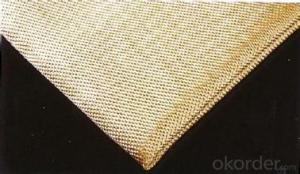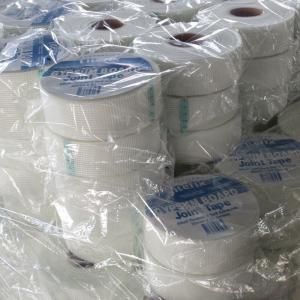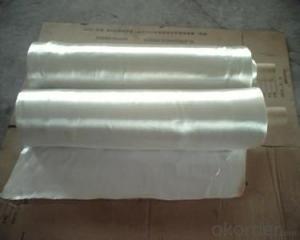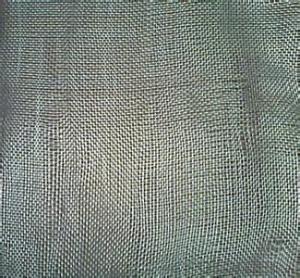vermiculite coated fiberglass cloth high quality
- Loading Port:
- Shanghai
- Payment Terms:
- TT OR LC
- Min Order Qty:
- 10000 m²
- Supply Capability:
- 500000 m²/month
OKorder Service Pledge
OKorder Financial Service
You Might Also Like
vermiculite coated fiberglass cloth
Well-distributed, even tensile strength, good vertical performance.
Fast impregnation, good moulding property, easily removing air bubbles.
woven roving 800g /m2 non-alkali .
Products Introduction and Application
E-Glass woven roving is plain, biaxial fiberglass fabric that weaved with E-Glass direct roving. E-Glass Woven roving is compatible with unsaturated polyester, vinyl ester, epoxy and phenolic resins. It’s widely used in hand lay up, mold press, GRP forming process and robot processes to manufacture boats, vessels, plane, automobile parts, panels, storage tanks etc.
Products Features and Advantages
Well-distributed, even tensile strength, good vertical performance.
Fast impregnation, good moulding property, easily removing air bubbles.
High mechanical strength, less strength loss in wet condition.
Key Technical Data
Specs | Unit Mass (g/m2) | Breaking Strength≥N/2.5cm | Density | Weave | Roll Length (m) | Width (mm) | |||
Warp | Weft | Warp | Weft | ||||||
EWR400 | 400 | 1480 | 1380 | 3.5 | 3.3 | plain | 100-200 | 300-4000 | |
EWR600 | 600 | 1900 | 1800 | 3.0 | 2.5 | plain | 100-200 | 300-4000 | |
EWR800 | 800 | 2600 | 2350 | 2.0 | 2.0 | plain | 100-200 | 300-4000 | |
Packing Style
It is rolled on a paper core with a diameter of 100mm, then packed into a polyethylene bag, then outside packed into a separate cardboard box. Finally, the product can be ether shipped with cardboard box only or with pallet.
Storage
In dry and cool places. The best condition is with temperature between 15°C and 35°C, with a relative humidity between 30% -70%. Before use, please keep it in original package.
fibreglass Sample is free,freight is collect
- Q:Can fiberglass fabrics be used for insulation in appliances?
- Yes, fiberglass fabrics can be used for insulation in appliances. Fiberglass fabrics are made from woven glass fibers that are highly heat-resistant and have excellent insulation properties. They can effectively trap and retain heat, making them ideal for insulating appliances such as ovens, stoves, and refrigerators. Additionally, fiberglass fabrics are lightweight, flexible, and easy to work with, allowing them to be easily installed in various appliance designs. They also have good durability and can withstand high temperatures without degrading or losing their insulation properties. Overall, fiberglass fabrics are a reliable and efficient choice for insulation in appliances.
- Q:How does fiberglass fabric perform in moisture absorption?
- Fiberglass fabric is known for its excellent performance in moisture absorption. Due to its inherent characteristics and composition, fiberglass fabric has a very low moisture absorption rate. The fabric is made from fine fibers of glass that are woven together, creating a tight and dense structure. This structure prevents moisture from easily penetrating the fabric. Compared to other materials such as cotton or polyester, fiberglass fabric has a much lower moisture absorption rate. It does not readily soak up moisture like natural fibers, and it does not retain water for long periods of time. This is advantageous in applications where moisture resistance is important, such as in outdoor or marine environments. The low moisture absorption of fiberglass fabric also helps to maintain its dimensional stability. Even when exposed to high levels of humidity or moisture, the fabric does not swell or warp. This makes it a suitable choice for applications where maintaining shape and integrity is crucial, such as in composite materials or reinforcement applications. Furthermore, the low moisture absorption of fiberglass fabric also contributes to its resistance to mold and mildew growth. Since moisture is not easily absorbed by the fabric, it creates an unfavorable environment for the growth of these microorganisms. This property makes fiberglass fabric a popular choice in applications where moisture resistance and hygiene are important, such as in the manufacturing of medical equipment or food processing industry. In summary, fiberglass fabric performs exceptionally well in moisture absorption. Its low moisture absorption rate, dimensional stability, and resistance to mold and mildew growth make it a reliable choice in various industries and applications.
- Q:What is the weight of fiberglass fabric?
- The weight of fiberglass fabric may differ based on the particular type and thickness of the fabric. Typically, fiberglass fabric is quantified in ounces per square yard (oz/yd2) or grams per square meter (g/m2). Fiberglass fabric is typically available in weights ranging from 0.5 oz/yd2 (17 g/m2) to 3.0 oz/yd2 (102 g/m2) or beyond. Lightweight fiberglass fabrics are often employed in applications like reinforcement and lamination, whereas heavier fabrics find common use in structural reinforcement or insulation objectives.
- Q:Are fiberglass fabrics suitable for use in the transportation industry?
- Yes, fiberglass fabrics are suitable for use in the transportation industry. They offer excellent strength-to-weight ratio, durability, and resistance to various environmental conditions. They are commonly used in the manufacturing of automobile components, aircraft parts, and marine vessels due to their high mechanical properties and ability to withstand harsh environments.
- Q:How is fiberglass fabric used in the production of fire-resistant curtains?
- Due to its unique properties and capabilities, fiberglass fabric plays a crucial role in the production of fire-resistant curtains. These curtains are designed to prevent the spread of fire and minimize its impact during emergencies. Fiberglass fabric, made from fine glass fibers, is known for its high resistance to heat and flames. This makes it an excellent choice for fire-resistant curtains as it acts as a barrier between flames and the surrounding areas. During the production process, fiberglass fabric is typically treated with special fire-retardant chemicals or coatings to enhance its fire-resistant properties. These treatments further increase the fabric's ability to withstand high temperatures, prevent flame spread, and minimize smoke production, resulting in a more effective fire barrier. In addition to its fire-resistant properties, the fiberglass fabric used in fire-resistant curtains is lightweight and flexible, making it easy to handle and install. This enables seamless integration into various settings such as homes, offices, theaters, or industrial facilities. Moreover, fiberglass fabric is durable and long-lasting, ensuring the effectiveness of fire-resistant curtains over an extended period. It can withstand regular wear and tear, exposure to sunlight, and moisture without compromising its fire-resistant properties. In conclusion, fiberglass fabric is a critical component in the production of fire-resistant curtains due to its exceptional fire-resistant capabilities, flexibility, durability, and ease of installation. By utilizing fiberglass fabric, these curtains provide a reliable and efficient solution to safeguard lives and property in the event of a fire.
- Q:How is fiberglass fabric measured and sold?
- Typically, weight, thickness, and width are the factors used to measure and sell fiberglass fabric. The weight of the fabric is indicated in ounces per square yard (oz/yd²), which signifies the amount of fiberglass material in a given area. A higher weight indicates a denser and stronger fabric. The intended use determines the common weight range, which can vary from 4 oz/yd² to 20 oz/yd². Another important measurement is the fabric's thickness, also known as its thickness. It is usually expressed in mils (1 mil = 0.001 inch) or millimeters (mm). The thickness of fiberglass fabric can vary depending on its application. Thinner fabrics offer more flexibility and are easier to mold, while thicker fabrics provide greater strength and durability. When measuring and selling fiberglass fabric, the width of the fabric roll is also a consideration. It is typically measured in inches or centimeters and refers to the width of the fabric roll. Common widths for fiberglass fabric range from 38 inches (96.5 cm) to 60 inches (152.4 cm). The width is an important factor to determine the quantity of fabric required for a specific project. Fiberglass fabric is commonly sold in rolls or by the yard. The length of the rolls may vary depending on the manufacturer, but common lengths are 50 yards (45.7 meters) or 100 yards (91.4 meters). Additionally, retailers may offer fiberglass fabric by the yard, allowing customers to purchase the desired length for their specific needs. In conclusion, fiberglass fabric is sold based on weight, thickness, width, and length. By considering these factors, customers can select the most suitable fiberglass fabric for their intended applications.
- Q:Are fiberglass fabrics resistant to mildew or fungus?
- Fiberglass fabrics have a tendency to resist mildew or fungus in most cases. This is because fiberglass, being a non-porous material, does not create an ideal environment for the growth of mold, mildew, or fungus. Furthermore, special coatings or finishes are frequently applied to fiberglass fabrics to further enhance their resistance against these types of organisms. However, it is worth noting that although fiberglass fabrics generally repel mildew or fungus, they are not entirely immune. In instances where the fabric is excessively exposed to moisture or not adequately maintained, there is still a possibility for mildew or fungus to develop. Hence, it is advisable to adhere to proper cleaning and maintenance protocols when dealing with fiberglass fabrics to guarantee their durability and prevent any potential growth of mold or mildew.
- Q:Can fiberglass fabric be used for heat shields?
- Indeed, fiberglass fabric proves to be a suitable choice for heat shields. Renowned for its exceptional thermal insulation characteristics, fiberglass emerges as an optimal material for shielding against heat. Its capacity to endure elevated temperatures without distorting or liquefying is of paramount importance in safeguarding delicate machinery or structures from heat-related harm. Moreover, fiberglass fabric possesses the added advantages of being lightweight, pliable, and readily moldable or cut into desired forms, thereby enabling effortless installation in diverse applications necessitating heat protection.
- Q:How is fiberglass fabric stored and transported?
- Fiberglass fabric is typically stored in a dry and well-ventilated area, away from direct sunlight and extreme temperatures. It is often rolled onto large cardboard or plastic cores to prevent creasing or damage. When transported, it is usually packed in durable containers or wrapped in protective materials to ensure its safety and prevent any potential damage during transit.
- Q:Are fiberglass fabrics resistant to solvents or cleaning agents?
- Yes, fiberglass fabrics are generally resistant to solvents or cleaning agents. Fiberglass is a synthetic material made from fine fibers of glass, which provides it with excellent chemical resistance. It can withstand exposure to a wide range of solvents, cleaning agents, and chemicals without deteriorating or losing its structural integrity. This makes fiberglass fabrics an ideal choice for various applications where resistance to solvents or cleaning agents is required, such as in industrial settings, automotive components, insulation materials, and protective clothing. However, it is always recommended to check the specific chemical compatibility of the fiberglass fabric with the solvent or cleaning agent in question, as some highly aggressive chemicals may still have an impact on its performance.
1. Manufacturer Overview |
|
|---|---|
| Location | |
| Year Established | |
| Annual Output Value | |
| Main Markets | |
| Company Certifications | |
2. Manufacturer Certificates |
|
|---|---|
| a) Certification Name | |
| Range | |
| Reference | |
| Validity Period | |
3. Manufacturer Capability |
|
|---|---|
| a)Trade Capacity | |
| Nearest Port | |
| Export Percentage | |
| No.of Employees in Trade Department | |
| Language Spoken: | |
| b)Factory Information | |
| Factory Size: | |
| No. of Production Lines | |
| Contract Manufacturing | |
| Product Price Range | |
Send your message to us
vermiculite coated fiberglass cloth high quality
- Loading Port:
- Shanghai
- Payment Terms:
- TT OR LC
- Min Order Qty:
- 10000 m²
- Supply Capability:
- 500000 m²/month
OKorder Service Pledge
OKorder Financial Service
Similar products
New products
Hot products
Hot Searches
Related keywords




























